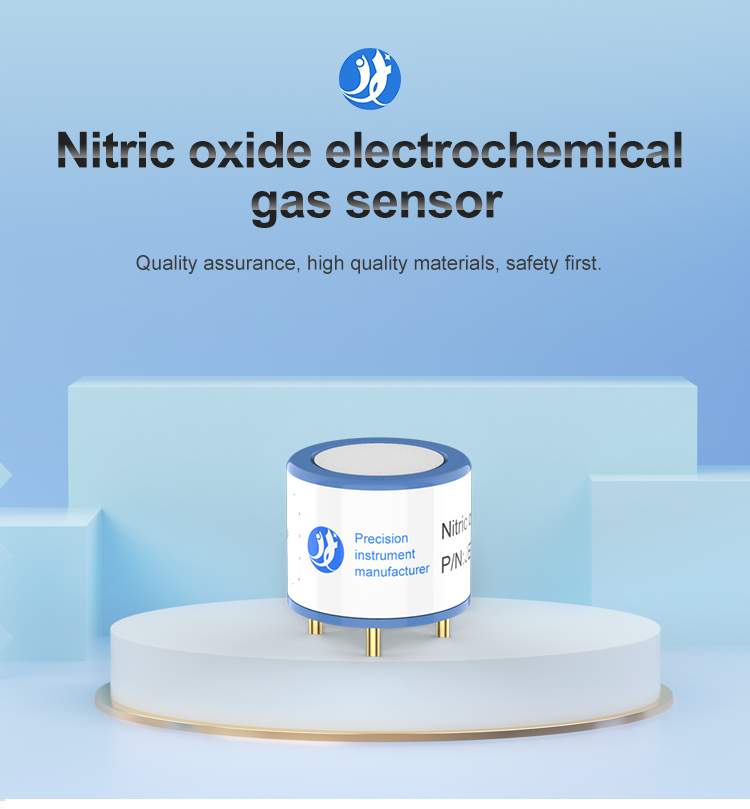Industrial production is essential for the development of our society, but it also brings potential safety hazards. Gas leakage is one of the most serious threats in industries such as petrochemical, mining, and semiconductor manufacturing. A tiny spark can cause a catastrophic explosion that endangers people's lives and property. Therefore, it is crucial to adopt advanced gas detection technology to monitor the concentration of flammable gases and prevent accidents. In this regard, infrared gas sensors emerge as effective and reliable guardians for industrial production safety.
Infrared gas sensors are one type of gas detectors that use the absorption of infrared radiation by gases to determine their concentrations. The operating principle of an infrared gas sensor is based on the Beer-Lambert law, which states that the intensity of light passing through a gas is attenuated as a function of its concentration and the path length. Infrared gas sensors detect gases by measuring the amount of infrared light absorbed by the gas molecules at specific wavelengths. Different types of gases absorb different wavelengths of infrared light, allowing the sensor to identify the gas and calculate its concentration.
Infrared gas sensors have several advantages over other gas detectors. Firstly, they have high selectivity and sensitivity that enable them to detect even low concentrations of gases and distinguish between similar gases. This feature is critical for industrial applications where false alarms can cause unnecessary shutdowns and losses. Secondly, they have a long lifespan and are resistant to environmental factors such as humidity, temperature, and pressure. This makes them suitable for outdoor and harsh environments like mines, oil and gas platforms, and chemical plants. Finally, infrared gas sensors have a rapid response time, usually within seconds, which is crucial for real-time monitoring of gas leaks and fast alarm triggering.
Infrared gas sensors have a wide range of applications in various industries. One of the most important applications is in environmental monitoring. Accurate and timely detection of toxic gases such as carbon monoxide, nitrogen oxide, and sulfur dioxide in the air is critical to protecting human health and the environment. Infrared gas sensors are also used in industrial processes to monitor the concentration of flammable gases such as methane, propane, and hydrogen. Flammable gas leaks can cause explosions, fires and even death, so it is vital to detect them before they reach a dangerous concentration. In semiconductor manufacturing, infrared gas sensors are used to monitor the purity of process gases such as the nitrogen used in silicon wafer production. Contaminated process gases can compromise the quality of the final products and increase waste and cost.
Infrared gas sensors are not only essential for gas detection and monitoring but also for safety management. With the integration of infrared gas sensors and the Internet of Things (IoT) technology, real-time gas monitoring and data analysis can be achieved remotely. This not only reduces the need for manual inspection but also improves the accuracy and reliability of gas detection. Additionally, data from infrared gas sensors can be used for predictive maintenance and optimization of production processes, reducing downtime, and improving efficiency.
In conclusion, infrared gas sensors are crucial guardians for industrial production safety. They have the advantages of high selectivity, sensitivity, long lifespan, and fast response time, making them ideal for gas detection and monitoring in harsh environments. Infrared gas sensors have various applications in industries such as environmental monitoring, petrochemical, mining, and semiconductor manufacturing. With the integration of IoT technology, infrared gas sensors can support safety management and process optimization. Therefore, it is necessary for industrial enterprises to adopt infrared gas sensors to safeguard the safety of people and the environment
 : +86 155 8830 2704
: +86 155 8830 2704 : jxdziot@gmail.com
: jxdziot@gmail.com
